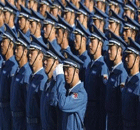Winter Sports
Figure skating
(vancouver2010.com)
Updated: 2010-02-01 13:35
 |
Large Medium Small |

An American, Jackson Haines, is considered to be the founding father of modern figure skating in the 1860s — established not in his home country, but in Vienna, Austria, where audiences loved his carefully choreographed, ballet-influenced style.
Before Haines, figure skating concentrated largely on required figures — skating a figure eight, several times exactly the same way — and movements. Haines brought in musicians to play on the ice while he skated, while adding interesting costumes and exciting spins and pirouettes.
Figure skating was an Olympic sport before there was an Olympic Winter Games. Figure skating first appeared at the London 1908 Olympic Summer Games with events for pairs and singles (indoor ice rinks could be kept cold even in hot weather). Ice dancing joined the Olympic Winter Games in 1976, when the Games were held in Innsbruck, Austria. The compulsory figures competition was dropped from the figure skating program prior to the Albertville 1992 Olympic Winter Games.
How It Works
At the Olympic Games. Each of figure skating’s four disciplines are adjudicated by a separate panel of 9 International Skating Union (ISU) championship judges using a computer scoring system to measure the quality of each performance. Before each event, there is a secret and random draw to determine which judges’ scores will form the result of the segment. Only seven of the 9 scores are used. A new draw is done for each segment.
During each performance the judges assign a grade of execution (GOE) to every element that is executed. This makes up the technical score. At the conclusion of each performance, the judges assign additional program component scores that measure the overall technical and presentation abilities of the skater or team. The individual or team with the highest totals of technical and program component scores is deemed the winner.
In addition to the panel of judges, there is also a technical panel that determines the name and the level of difficulty of each element as it is performed.
Singles
In singles skating, skaters must complete both a short program (maximum 2 minutes 50 seconds) of required steps, jumps, spins and combinations, and a longer free skating program (4 minutes for ladies, 4 minutes 30 seconds for men), both set to music. The free skate — worth two-thirds of a skater’s final score — allows the athletes to demonstrate their creativity, innovative moves and technical difficulty.
Pairs
The pairs event follows the same format as the singles, with a compulsory short program and a free skate (4 minutes 30 seconds). In this event, however, one male and one female skater work in unison, incorporating lifts, throws and synchronized jumps, spins and spirals linked harmoniously by steps and other movements.
Ice Dance
Ice dance is performed by a couple and is based on their rhythm, interpretation of music and precise steps. Unlike pairs skating, ice dance does not include overhead lifts and jumps. Ice dance is similar to ballroom dancing, as the skaters remain in contact throughout most of the program.
An ice dance competition is made up of three parts: one compulsory dance, an original dance and a free dance. Compulsory dance is the skating of prescribed patterns to music incorporating pre-determined rhythm and tempo. Original dance and free dance are created by each couple to music of their own choice. There are also required elements such as dance lifts, spins, synchronized twizzles (a multi-rotational one-foot turn) and step sequences that must be included in the composition of these programs.







